The knee joint – much more then a simple hinge (and why it matters)
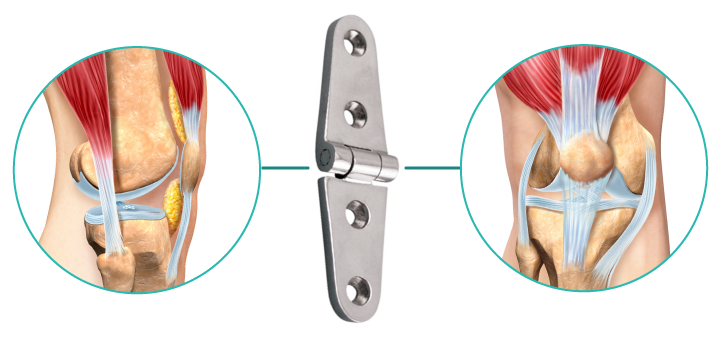
According to joints classification, the knee is a “hinge joint” that folds and unfolds like a hinge. Indeed, life would be so much easier for many of us if it was a simple hinge – we would probably have much fewer knee problems. A simple hinge would be stable and predictable, moving only one way (fold-unfold) and keeping the top part perfectly aligned over the bottom part. Well, Mother Nature, in her infinite wisdom, made it a bit more complicated to broaden our movement potential (which came at the expense of stability).
Here is how the knee joint is different from a simple hinge and what it means for our yoga practice.
1. The knee joint allows for flexion and extension (when you bend the knee and then straighten the leg) but also a little bit of rotation. This means that when you are attempting to fold yourself into Pigeon, Lotus, or any other “hip opening” position that involves external hip rotation, your knee would be happy to help and rotate a bit as well. The problem is that if your hips are tight and do not want to rotate, but you keep leaning into the pose using body leverage, the knee, in its willingness to help, can get hurt, since it has very little rotation potential.
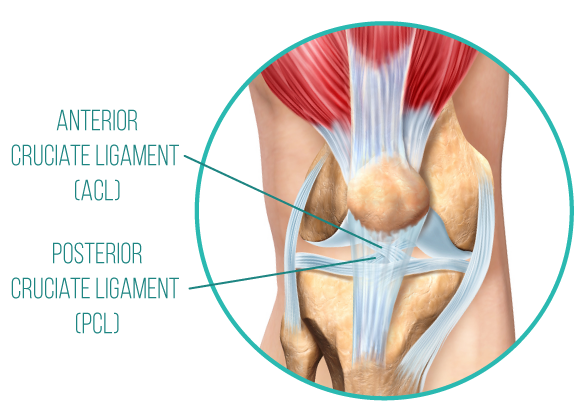
The crisscross ligaments between the top and bottom bones of the leg—called the ACL and PCL—designed to stabilize the position between the two can get injured. And just like any other ligament injury, they are very slow to heal (if they heal at all, they might eventually require surgery to repair them).
How to protect yourself in yoga:
- Always warm up your hips extensively with movement before holding any strong hip openers (never start your practice with Pigeon or Cow face poses!)
- Pay very close attention to the position and sensations in your knees when you do hip openers. If you feel anything at all in your knees, back off.
- Do not use body leverage to lean into a challenging position unless you are sure that your knee feels supported and secure and all the action is happening in the hip.
- Back off from hip opening poses if you have knee issues and instead focus on movements that strengthen the muscles that support the knee.
2. The contact surface between the knee bones is always changing. The bony protrusions between the top leg bone (femur) and bottom leg bone (tibia) fit perfectly together (like Legos) only when the leg is perfectly straight. But when you bend the knee, the way they slide against each other changes constantly and depends on the positioning of those bones. For example, keeping the feet together, hip distance apart, or wide apart for squatting positions (in a Chair pose or Wide-legged forward bend, for example) will change the points of contact.
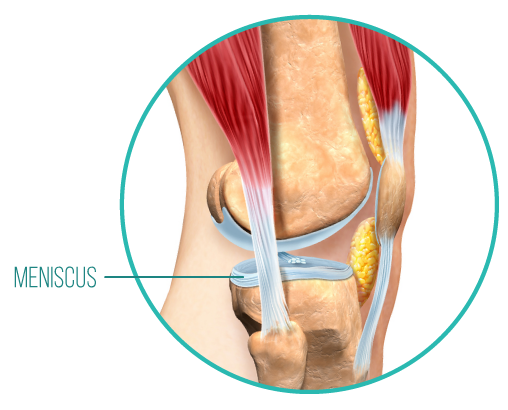
Between those bones lie pieces of cartilage (called “meniscus,” plural “menisci”). Occasionally, the cartilage can get irritated, crack, tear, or fragment, which can cause knee pain. Meniscus tears are usually caused by impact or sudden leg twists in sports, such as football, soccer, or basketball, but meniscus can also become inflamed from continuous pressure (for example, from being overweight).
Both tears and irritation can happen at different parts of meniscus. The outer part, called “the red zone” has better blood supply and can potentially heal on its own. The inner part, called “the white zone,” does not have a good blood supply, and tears there might require surgery.
How to protect yourself in yoga:
- Meniscus tears are often the result of an accident, so you cannot foresee that. However, you can maintain the strength of the surrounding musculature of the knee to ensure that your knees have adequate support. This means that you need to do standing yoga poses regularly, including the ones where your feet bear weight with your legs straight AND with knee(s) bent. Maintain good knee alignment.
- If certain standing positions hurt your knees, you can experiment with changing the position of your feet to change the pressure points within your knee joint. But if the pain is acute – just stop.
- Practice poses that include bending the knees with feet together, hip distance apart, and wide apart to keep your cartilage healthy and properly lubricated. If some of those positions hurt the knee, don’t do them.
3. Additional mobility in the knee joint allows for the knees to move in toward the midline of the body even when your feet remain hip-distance apart (“knocked-kneed” position). This happens often in poses like Chair or Warrior 2 (causing the “droopy knee“).
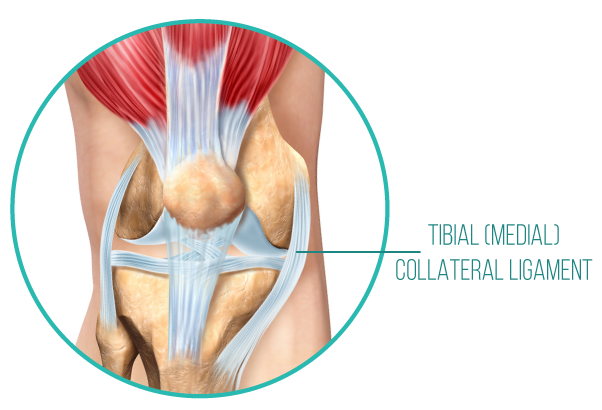
This can put a strain on the tibial collateral ligament that supports the knee from the inside. This is particularly problematic in weight-bearing positions since the knee joint is responsible for transferring the weight of the body from the femur (upper leg) to the tibia (lower leg).
In fact, the knee often ends up on the receiving end of what is happening above (with the hips) and below (with the feet). The knees are literally caught in the middle. That is why we focus so much on “tracking” – stacking the ankle, knee, and hip joints on top of each other to ensure the best alignment for weight transference.
How to protect yourself in yoga:
- In poses like the Mountain pose, keep your feet hip-distance apart. Keeping the feet together is not very stable and causes us to tense the inner thigh muscles, creating an imbalance between the inner and outer hip (which can then travel down to the knee). This is especially pronounced in women since we naturally have wider hips. It is fine to do occasional poses with feet together, but not to make that your default position.
- Work on balanced development between your adductors (inner thigh muscles) and abductors (outer hip muscles). And don’t forget your IT band.
- If you notice your knee(s) collapsing inward in Chair pose or Warrior 2, you can either correct it with intentional muscle engagement (pressing the outer edge of the foot down and intentionally moving the knee out in Warrior 2 might help) or with props (putting a light block between the inner thighs in Chair pose will help keep your knees in proper position).
None of these potential issues would be relevant if the knee were a simple hinge joint. In addition, there is this pesky patella (kneecap) that can slide around on top of the knee joint and make it hard for us to get down on our knees or go up or down the stairs.
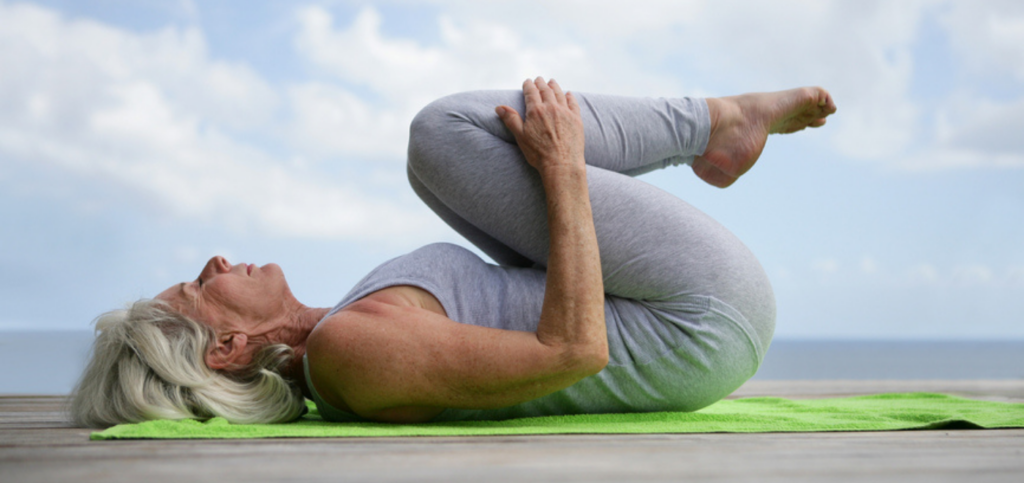
Certain movement combinations work every time to release tension in specific body areas, and simple yoga practices based on those movements give students reliable relief from their physical tensions.

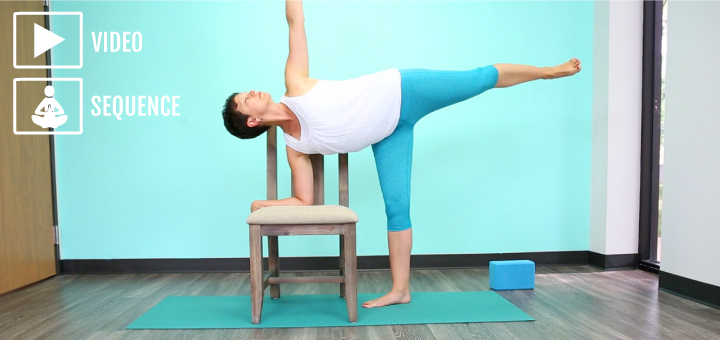
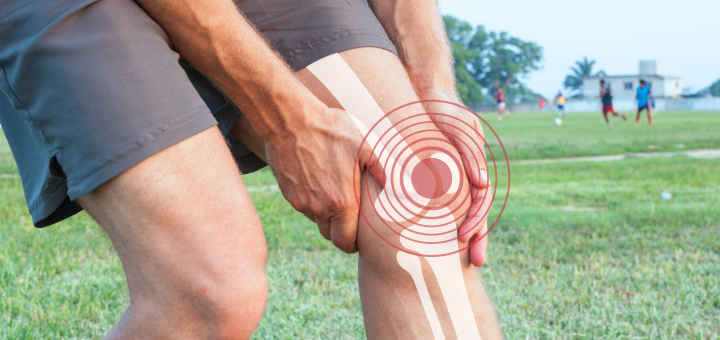






Great subject Olga ! I’m just about to tape my inner knee, after having done a not so good for the knee yoga exercise : sitting next to knees (like a mermaid look alike) and swtich sides (br) where I hurted I don’t know what in the inner knee, 6 weeks ago. It makes a strange noise every now and than. Ligament? ‘Gooses foot?? This afternoon I’ll buy kinesiotape. Curious if it will help. see http://www.kttape.com/instructions/inner-knee/
And curious about your next blogs. Thanx for now Olga! greetings
The knee joint is indeed special. It allows you to, quite literally, move forward in life. It holds on to many of our emotions and views, supporting or otherwise, making us yield or not. The capacity to move forward is living life to the full with our knees happy to carry us forward!
This is assured with regular shiatsu treatments as it works all the meridians that go through the knees which is all 12.